
Home Defense Guest Writer: Kenzie Fitzpatrick
Bad things happen to other people, right? That’s what I always thought, what I told myself.
Reports of crime and catastrophe seem so far away on the news or in posts on social media. Those things couldn’t possibly happen to you. Until the day they do. Reality comes crashing in and in a moment, you’re in a situation that turns your entire life upside down.
How do you react? What do you do? Everyone thinks they are prepared, that they know how to handle it, until they are in that moment of total chaos. That’s the thing about chaos, you can’t control it. You’re just along for the ride. It’s up to you to survive, to trust your instinct, change, adapt and overcome the threat in front of you.
Home Invasions Happen Every Day
I got too comfortable. You do that when you’re 17 years old, living in a nice house, with protective parents who own firearms. Nothing can happen to you in your safe space, right? It was a naive idea that I believed in. Then, I watched it shatter, like a rock going through a glass window in front of me.

Someone knew exactly where to climb a fence and break a kitchen window to gain access to my home.
It was a day like any other day. I scurried off to work that morning. As usual, I was the last to leave the house. I reflexively locked up and headed out. My mind was already counting down to the end of the day. I got off around 3 p.m., and headed home, pulling into the driveway a few minutes later.
I remember unlocking the front door with my key only to realize the lock wasn’t moving.
Something felt wrong. I pushed open the front door and walked into the house, something was missing… a TV set in the living room. I remember feeling uncomfortable, but not really registering what was going on. I walked to my bedroom, things were missing; My TV and MacBook Pro I got for Christmas barely a month earlier, were gone.
Everything suddenly closed in around me, it felt like I was reacting in slow motion, but I was running and moving fast. It was really happening, those bad things that always happen to other people were taking place in my house.
At that age, I only shot guns on hunting trips. I didn’t know either the code to the safe or who else was in the house with me. I had a purse in my hand to defend myself with. The only thing I knew to do was run.
I ran straight out the front door, I made it into my truck, and drove to the closest parking lot I could find. My heart was racing. Now what? Who do I call?
I dialed numbers, first, to the Escambia County Sheriff’s Office and second, to my dad. I heard his voice and the reality of what happened hit me, I came undone. The adrenaline and stress of the situation were more than I could bear on my own.
I remember my dad saying he was leaving work immediately and was on his way to get me. I remember him telling me to stay in place and not to go back to the house under any circumstances. It seemed like an eternity until he showed up. I kept replaying his words, remembering him saying how it was going to be okay, the most important thing was that I wasn’t in danger or harmed. That’s all he cared about. Those words comforted me.
Are We Really Safe At Home?
Looking back, the important thing to remember about that day is that it could have happened to anyone. It did happen to me, but I am not special. There was nothing special about my house, nor the possessions in it. From the road, it looked just like any other house in the area.
The break-in was just like any other home invasion, it took place between 10 a.m. and 3 p.m., statistically the most common times for a break in to occur. If it could happen to me, it could happen to you. In my case, the person who broke into my family’s home was never caught. They got away with stealing our personal items and our sense of security.
Surviving A Home Invasion:
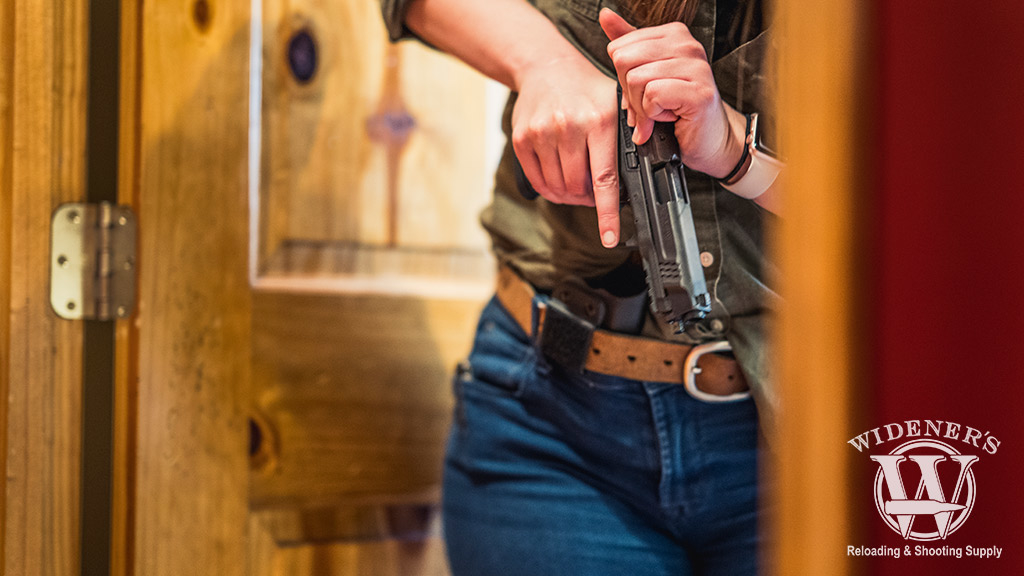
Having an emergency plan and practicing it with your family is a vital part of protecting their personal safety.
Hindsight is always 20/20. You can’t tell yourself what you should have done in a situation if you’ve never planned for it. You don’t know what you don’t know. Looking back now, with that knowledge, I do know what I would’ve done differently:
1. Have a plan.
Since the break-in, my family has implemented a lot more safety features in our house – an alarm, cameras, lights, and most importantly, a “what if” plan. Beforehand, we had never talked about what to do in an emergency situation as a family. I wish on that day I had been armed with a plan and a defensive object to make me feel safer. I wish I had a neighbor or someone in close proximity to call who was at home, as my dad worked pretty far from the house.
Now, I keep my phone much more accessible when I am coming or going from a location, so I can make that call again quickly if I needed to.
2. Get out of the house.
We found out much later, after the investigation where the point of entry was. The police believed it was someone familiar with our home, possibly even someone my family knew. They knew where to climb the fence, which door was vulnerable, where to throw a rock to break a window, and where valuable items would be. Even though I had a bad feeling when I opened the front door, I didn’t stop to think about my personal safety. It’s common for people to forget to lock doors, but I knew I had never done that before with my daily routine. By entering the house, I put myself into real danger. Without an equalizer like a firearm, there’s not much an untrained, 120-pound, 17-year-old girl could’ve done to defend herself against a potential attacker.
3. Don’t accept being a victim.
I finally got the nerve to drive back to the house once my dad called and told me he and the deputies were there on the scene. The police asked me to give a statement. I completely shut down. I’d never felt so vulnerable in my entire life. I felt violated and struggled to face the reality that my home was no longer a safe and protected space.
I remember not wanting to talk to anyone, friends, family, deputies, no one. Shockingly, I didn’t even want to see or talk to my boyfriend who had just driven hours to see me. Not only did I let a criminal’s actions get in my head, but I also let it destroy my peace of mind.
4. Talk to someone about the situation.
My dad is a social worker, he’s a professional who deals with crisis on a daily basis. Yet, at that moment, he was the last person I wanted to talk to. I knew deep down I wasn’t handling the situation well, I buried it and refused to talk to anyone about it. I had to be tough, I had to keep going. That was a mentality I adopted, as a female with almost all male relatives. I was the girl who went hunting and camping in the deep woods. Toughness was who I was, it was my response to everything.
In reality, that attitude didn’t help me or the situation at all. If something traumatic happens in your life, I recommend getting out in front of the issue. I think if I would have talked to someone about it then, I could have let it go sooner and it wouldn’t have let it bother me for so long.
You Are Not A Victim
That Friday is a day I’ll never forget. It changed me, but for the better. I refuse to ever let myself be a victim again. It put me on a path. I’m so thankful that I’m an American citizen and I have the Second Amendment as a right. I feel a little bit safer with peace of mind knowing I can defend myself if I need to.
Lightning Strikes, Twice
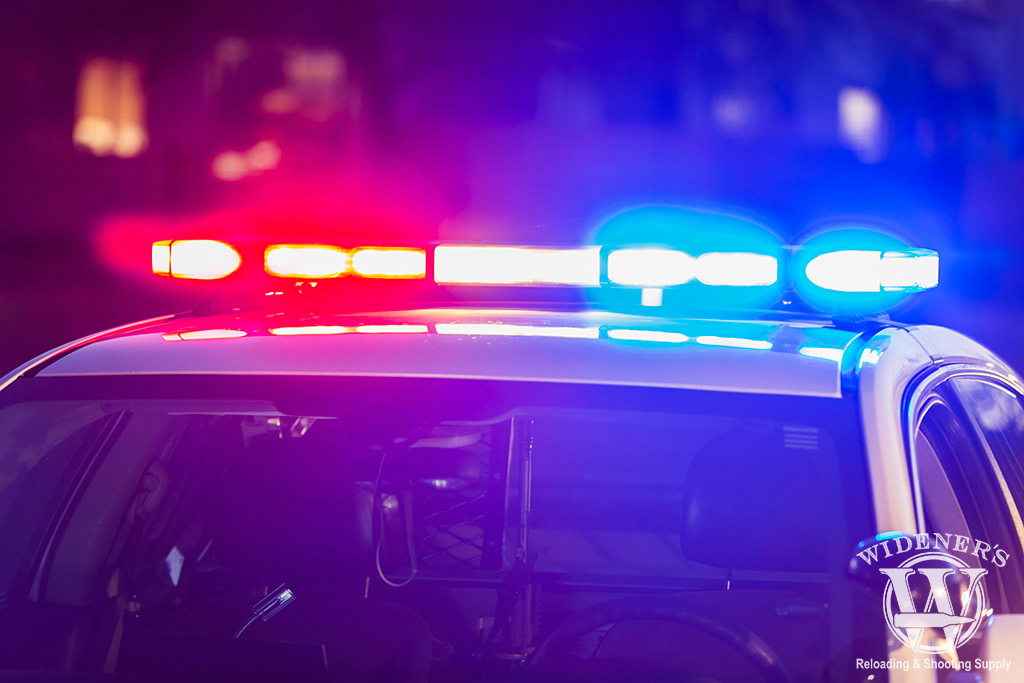
Are you prepared to evade a threat and defend yourself in a high-stress situation until the police arrive?
The odds of being the victim of a robbery are about 1 in 500, if you’re unlucky enough to have it happen twice, you better have learned something the first time.
Fast forward to 2015, I was living in sunny Tallahassee, FL. I graduated from college a month before and was living on my own in an apartment. It was a Wednesday night, at 8:24, when lightning struck twice and a convicted felon picked my apartment and tried to break in my backdoor.
I was watching television and heard a doorknob rattling. It wasn’t my front door, it was the backdoor that I never used.
I got that feeling, the one I had years before when I tried to use my key at my parent’s house, only to find the front door already open. My apartment was not in the best location, but I had learned that safety is more of a mindset, rather than a physical space. I muted the TV, quickly got up from the couch, and retrieved my Glock 17 loaded with 9mm hollow points from my bedroom.
It was happening again, the bad things that only happen to other people, they were right outside my door and trying to force their way in. The adrenaline hit, except this time it was different. This time I was 22 years old, had my concealed carry permit and was not going down without a fight. I had training, I had a plan and I was not willing to be a victim to the chaos.
With my phone in hand, I called 911, but I also had a backup plan.
I called two friends who worked close by at the local shooting range I am a member of. In the 8 minutes I was waiting for officers, the suspect moved and was now attempting to force entry through my front door. I was no longer in fear. I yelled commands through the door, telling the suspect to identify himself. The situation suddenly de-escalated, the suspect stopped trying to enter the apartment and realized he’d been exposed and verbally confronted.
My friends beat the officers to the scene and arrived with reinforcements to keep the suspect at the scene as the police were on their way. One of my friends, who is now a police officer, stayed outside with the suspect while the other came inside to check on me. Afterward, the suspect backtracked and made up a story that he was looking for a friend who previously lived in the apartment.
Once officers arrived, they flanked him on all sides, patted him down and questioned him on what he was doing there.
A Felon About Town
In the police report, it was recorded that the suspect, had recently been released from prison and responded to the incident location allegedly looking for a person with the alias of “Crystal.” The officers noted that he was in their database as a convicted felon. Thankfully, whether his story was real or not, no weapons were found on his person, despite his prior criminal history of violence. The Leon County Sheriff’s Office booking reports, available to the public, showed that the suspect had several criminal charges in January of 2015.
These are the charges found on that booking report:
- NARCOTIC EQUIP-POSSESS AND OR USE 1
LEON COUNTY SHERIFF TALLAHASSEE - COCAINE-POSSESS POSSESS COCAINE 1
LEON COUNTY SHERIFF TALLAHASSEE - BURGL UNOCCUPIED STRUCTURE UNARMED 1
FLORIDA A & M UNIVERSITY POLICE
DEPARTMENT TALLAHASSEE - GRAND THEFT IS $300 OR MORE BUT LESS THAN $5000 1
FLORIDA A & M UNIVERSITY POLICE
DEPARTMENT TALLAHASSEE
The suspect also had prior trespass warnings from Florida A&M University in Tallahassee, FL.
I requested the officers issue a trespassing warning, which was all they said they could do, although I very much wanted more action taken. There were many questions that their report didn’t provide answers to. Why was a convicted felon, who had just been released from prison, trying to enter my apartment without knocking or announcing his presence? Did anyone he knew previously live there? Or was he caught while trying to commit another crime of opportunity? There was so much I didn’t know.
Those weren’t even my biggest fears. What if he came back? As a female, would I be able to defend myself? Was I more vulnerable now that he knew where I slept and that I was alone at night? My old mindset returned and I once again lost my peace of mind worrying about my security. I was afraid to sleep for several nights, wondering if retaliation was coming from the suspect for calling the police. Afraid, I wasn’t sure if I trusted myself to wake up to sounds of intrusion if I fell asleep. I had to do something to face my fears.
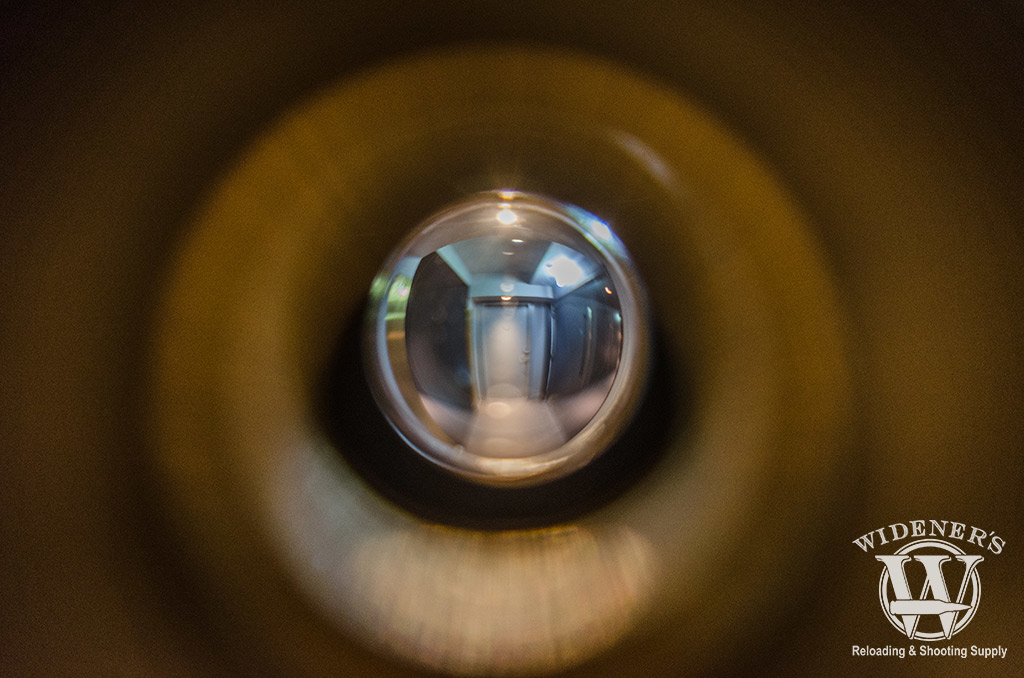
The ability to visualize a potential threat can give you a situational awareness advantage.
I realized that especially in a college town, you really have no clue who is living in the dorms or apartments around you and what sort of people they are or associate themselves with. After talking to the property manager about the situation, they agreed to help by installing a peephole on the back door, so I could see what was happening outside. I purchased motion sensors for the doorways, so alarms would sound if anything moved past them. I continued to train at the shooting range and learn from qualified instructors about situational awareness.
Observe And Report
One night I volunteered to go on a ride along with a police officer, I wanted to take a look at my community through the eyes of those who serve and protect it. A case that officer worked was similar to my situation. Two criminals attempted to kidnap the resident of an apartment, only to find out that the person they were targeting no longer lived there.
The new tenant was well-armed with a semi-automatic rifle and was able to defend himself. The two suspects were both armed, had duct tape, rope, and items typically used in kidnapping situations. Not only was this was an eye-opening experience for me, but also it helped me understand how a case of mistaken identity and the wrong apartment could truly change your life.
I started learning more about my community by going on the ride alongs with the police. Riding with different officers in different zones and began to see things in a different light. I would highly recommend going on at least one ride along, just to gain an understanding of how the police respond to chaos. It provided a needed perspective situational awareness and increased my knowledge of various residential areas and the criminal activity to be aware of.
The Best Home Defense:
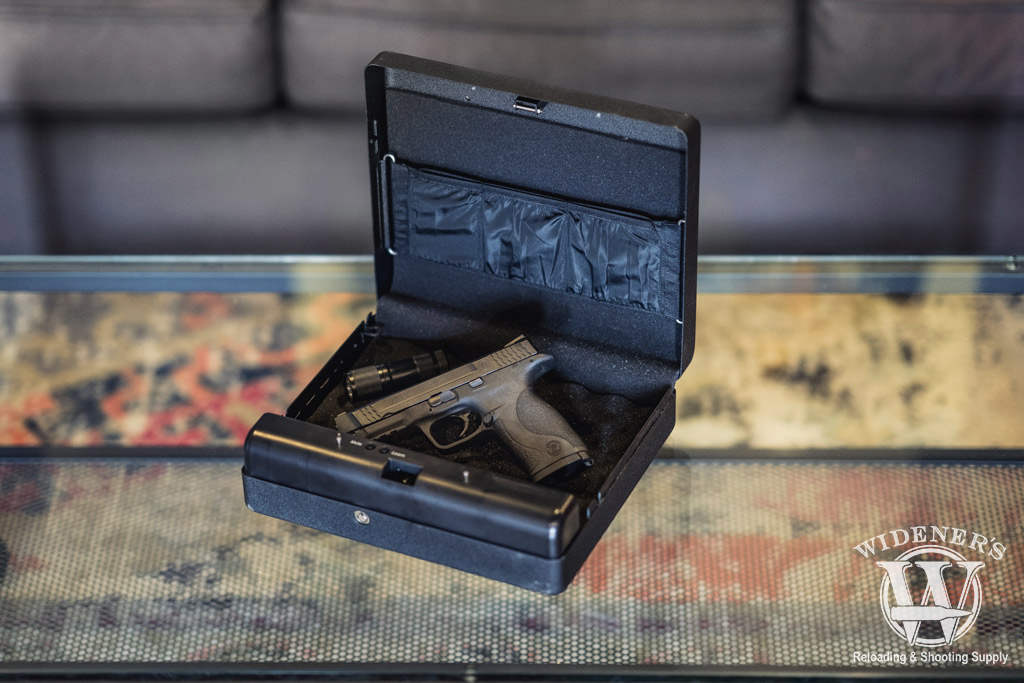
Having access to firearms in close vicinity is an ideal tactic for self-defense against a threat.
Until it happens to you, it’s hard to understand that it can happen to anyone, anywhere at any time. Not only did my world view change after these events, but I learned I needed to remain vigilant and active in protecting myself and others. I don’t look at the world negatively, but rather with an understanding of reality.
My second amendment right might have saved my life. It gives me peace of mind, and gives me an equal playing field when it comes to facing criminals.
That said…
Here’s what I Would’ve Done Differently:
1. Access to firearms.
Having to retreat to another room to get my firearm is a less than ideal tactic for self-defense. There’s no guarantee that I would have had time to retrieve my handgun if the suspect had decided to kick my door in. Having a weapon stored safely nearby, or on your person, preferably in carry condition one, or two, increases the amount of time you have to assess a threat and decreases the time you need to take action against a threat.
Until the chaos happens to you or someone you care about, you most likely won’t change your habits or understand the mindset. I practice situational awareness, keeping no more than 3 feet between my firearm and my hand whenever possible. When you start to realize chaos can happen at any time, any place, your mindset changes. When you realize police take 8 to 21 minutes to even arrive on the scene, you understand there is only one person who is responsible for your personal safety, yourself.
2. Avoid doorways.
I wasn’t afraid of the suspect, but I wasn’t smart in confronting him in a doorway. Don’t ever put your body in a place where you can be injured. I put myself directly in what could’ve been the line of fire if he was planning to use a gun. In hindsight, I would’ve stayed behind cover and waited, prepared to defend myself. It’s not an ideal situation, but it could save your life.
3. Concealment and de-escalation.
Every high-risk situation is different, the best course of action needs to be evaluated on a case-by-case basis. In some situations, if the threat is imminent, the best defensive course of action may be to verbally confront an intruder from a safe distance. Immediately making them aware that you have called the police and that you are armed may de-escalate the situation.
The majority of home invaders are after your personal items, not after you, so they will want to avoid contact with you, especially if you are armed. It’s unwise to assume a cornered suspect won’t attack you, but sneaking up on them with the intention of a surprise attack could easily backfire. If you can’t see or identify the target, you have no business blindly shooting at it, it’s just as likely that it could be a friend or family member making an unannounced visit, rather than a home invader.
In my specific case, the best idea may have been to remain silent. I had a barricade between myself and the suspect, I had friends and police enroute, and I was able to take the time to arm and defensively shelter myself against an attack. The idea is to conceal your location, in hopes that the threat remains unaware of your presence, and is apprehended or leaves your home without incident. In my case, by shouting at the suspect before help arrived, he could have figured out where I was. If he had been to the apartment before, he may have known my location, because of his knowledge of the space. My advice is don’t give away your defensive hiding place unless you have to, if the threat against you is imminent, use verbal commands to de-escalate the situation until help arrives.
Understanding Situational Awareness
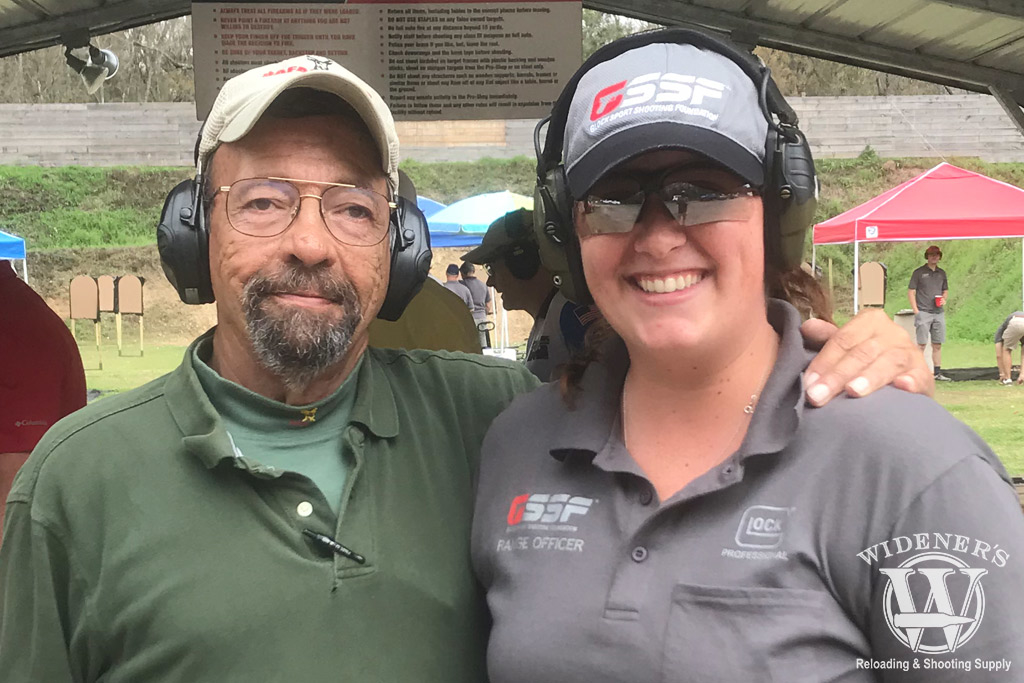
Your training is everything! Make sure you choose a qualified instructor to guide you with real-world scenarios.
Having an understanding of how to persevere through chaos changed my mindset, my awareness and my life. One not only gave me the desire to not be a victim, but the other also gave me the confidence that I can protect myself. Here’s what I’ve learned about situational awareness from all of this:
1. Train for real-world situations.
Your training is everything. How you train and how often you train could save your life. Since both of these incidents happened inside my home, I’ve trained to grab my shotgun from my bedside and navigate through hallways with it. Night sights have been installed on my home defense pistol and I’ve trained in the dark to grab it and align my sights.
I practice a lot with my concealed carry pistol and holster. I train to unholster my pistol and fire one-handed in case I’m carrying a purse, groceries, etc.
In a life-threatening situation, you only have so long to react. Your training will give you muscle memory on how to unholster your firearm, how to grip your firearm, how to aim, and more. I don’t want to think about fundamentals when the adrenaline is flowing. Train as if it were all you’ve got.
2. Practice situational awareness
It’s not always about a gunfight when it comes to situational awareness. Sometimes it’s as simple as watching for theft, who started the bar fight, or what kind of car the hit and run suspect was driving. Put yourself in the best position to view your surroundings. Having your back turned is not a good idea. Try and stand or sit in a corner with a view of the entire layout. In a movie theater, do you sit in the middle row in the middle of the theater, or are you by an exit sign at the top for easy access?
Watch who enters and exits a restaurant. Look at people’s hands. The hands are what can cause the most harm. Learn to read body language. Either take a class on situational awareness, or learn from a trusted instructor if you can. I’ve learned to be evasive and quickly put a distance between myself and the person walking behind or in front of me in a crowd. No matter my outfit, I stay prepared, having a gun, a knife, pepper spray, and tourniquet on me at all times. What I’ve learned is that I’m responsible for my own personal safety. I must remain alert and vigilant wherever I go, whether solo, or with friends and family.
3. Share Your Story
Many people don’t know my story or know the “why” behind why I choose to carry concealed. It’s easy to keep difficult experiences to yourself and never share them with the world. When people speak up and begin to share their stories, even if it doesn’t help you, then you have just helped someone else speak up or feel better. By just relating to someone, you make others feel less alone.
A firearm is a tool and the more we share how firearms play a role in saving lives or attempts on lives, the better our community will be. If you’re reading this right now, it means a positive message about firearms is out there. I encourage you to share your story with others.

